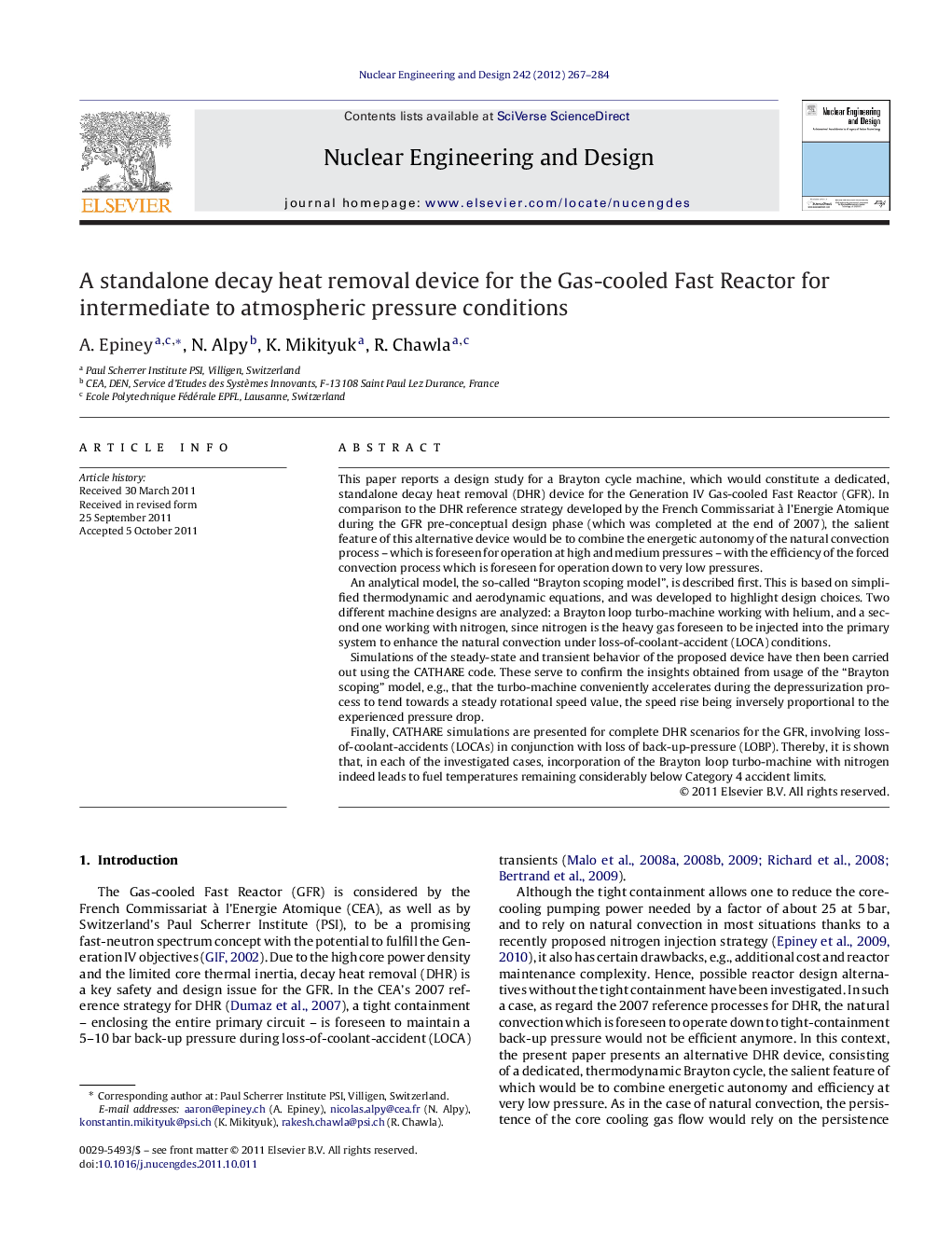| Article ID | Journal | Published Year | Pages | File Type |
|---|---|---|---|---|
| 297356 | Nuclear Engineering and Design | 2012 | 18 Pages |
This paper reports a design study for a Brayton cycle machine, which would constitute a dedicated, standalone decay heat removal (DHR) device for the Generation IV Gas-cooled Fast Reactor (GFR). In comparison to the DHR reference strategy developed by the French Commissariat à l’Energie Atomique during the GFR pre-conceptual design phase (which was completed at the end of 2007), the salient feature of this alternative device would be to combine the energetic autonomy of the natural convection process – which is foreseen for operation at high and medium pressures – with the efficiency of the forced convection process which is foreseen for operation down to very low pressures.An analytical model, the so-called “Brayton scoping model”, is described first. This is based on simplified thermodynamic and aerodynamic equations, and was developed to highlight design choices. Two different machine designs are analyzed: a Brayton loop turbo-machine working with helium, and a second one working with nitrogen, since nitrogen is the heavy gas foreseen to be injected into the primary system to enhance the natural convection under loss-of-coolant-accident (LOCA) conditions.Simulations of the steady-state and transient behavior of the proposed device have then been carried out using the CATHARE code. These serve to confirm the insights obtained from usage of the “Brayton scoping” model, e.g., that the turbo-machine conveniently accelerates during the depressurization process to tend towards a steady rotational speed value, the speed rise being inversely proportional to the experienced pressure drop.Finally, CATHARE simulations are presented for complete DHR scenarios for the GFR, involving loss-of-coolant-accidents (LOCAs) in conjunction with loss of back-up-pressure (LOBP). Thereby, it is shown that, in each of the investigated cases, incorporation of the Brayton loop turbo-machine with nitrogen indeed leads to fuel temperatures remaining considerably below Category 4 accident limits.
► An analytical model predicting Brayton cycle off-design steady states, is developed. ► The model is used to design an autonomous decay heat removal system for the GFR. ► Predictions of the analytical model are verified using CATHARE. ► CATHARE code is used to simulate a set of GFR safety depressurization transients using this device. ► Convenient turbo-machine designs exist for the targeted autonomous decay heat removal for a wide pressure range.
